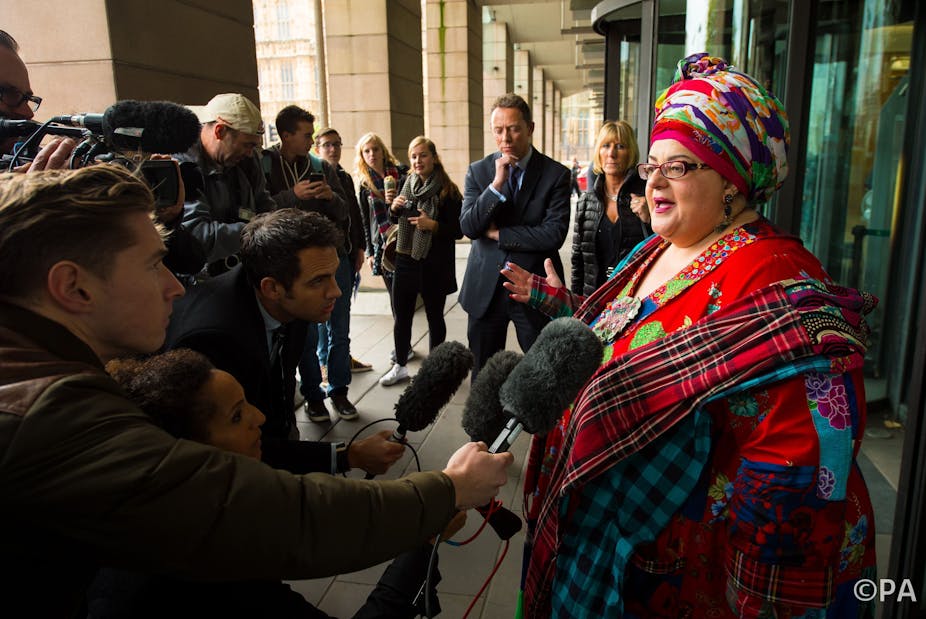The collapse of the charity Kids Company has attracted a huge amount of attention – not least as a result of the drama involved. Investigations into what went wrong have brought forth stories of teenagers queuing up to pick up envelopes of money from the charity that they promptly spent on drugs.
Reports also emerged that the charity claimed its closure would lead to riots and attacks on government buildings. And transcripts can be read of a long and rowdy session of the public administration and constitutional affairs committee of MPs, which investigated the closure of the charity and took evidence from Camila Batmanghelidjh, Kids Company’s founder:
Camila Batmanghelidjh: I would like to ask you on what basis you have decided that this is a failing charity. Because if it is on the basis –
Chair: Because it has gone bust.
The less dramatic story, and the more worrying one, is about financial control in Kids Company and the value placed on financial literacy across the charity sector.
Kids Company produced annual accounts which it duly deposited with the Charity Commission, the charity regulator. It went through the proper audit process every quarter, every year – something Alan Yentob, chair of the charity’s trustees, frequently mentioned in his evidence to the MP inquiry. However, the fact that every year referred to Kids Company’s shortage of reserves, and potential cash flow problems, seems to have been outweighed by the copious data making claims for its successes.
In 2013, for instance, its annual report (pdf) featured data on the problems of “750 exceptionally vulnerable young people” who had been successfully helped by the charity, and another 200 under-14s, one in four of whom had no tables and/or chairs in their houses. Kids Company was also very vocal in claiming that it supported “some 36,000 children, young people and vulnerable adults”. But this has been disputed, as only 1,900 cases have been passed onto London local authorities since its collapse.

Even if all of Kids Company’s impressive data were true, the reader of the accounts has nothing to measure them against. How were these sample groups selected? What was the evidence for these problems? Is this better or worse than other charities, or than what might be expected of Kids Company? Reports of Kids Company’s good deeds were heeded over its financial viability, as indicated by exchanges between the government and senior civil servants.
Judging results
What has attracted less attention than the apparent overstatement of clients was the reluctance of Kids Company to let its results be monitored. The National Audit Office (NAO), tasked with certifying the accounts of all government departments, commented that the government had “relied heavily on Kids Company’s self-assessments to monitor its performance”. Until 2013, the key performance indicators that the NAO requested did not appear in Kids Company’s quarterly monitoring reports.
This improved in 2013-15 when the government specified some “delivery expectations”. As the NAO reported, Kids Company outperformed to a startling degree: “Against a target of 1,347 interventions in 2013-14, they delivered 30,217 interventions.” But how successful were the interventions in improving outcomes? There was no pre-arranged standard for measuring success so the government could not monitor it.
When the MPs inquiry asked Kids Company’s auditor about the charity’s reserves – how much he thought would be a safe level – he suggested six months of expenditure or roughly £12m would be an appropriate level. In its last available balance sheet for 2013, the last available, Kids Company shows its unrestricted reserves were just £434,282 in 2013, with a further £1.3m in restricted reserves and designated funds – about enough money to keep it going for a fortnight.
The trustees stated in the 2013 report that they were aware reserves needed to increase, but that their “business model is to spend money according to need, which is consistently growing. We aspire to build up our reserves when circumstances allow”. It seems that they deferred the aspiration for too long.
Causes vs accounts
Some have accused a focus on accounting as a distraction from worthy causes. Some decisions, it is argued, should not be made on the basis of purely financial costs and benefits. How can individual welfare or happiness – and the contribution of charity – be valued in monetary terms? Financial accounting is just a reductive simplification of the work charities do, treating people’s welfare as an expense to be contained. On this basis, we should not criticise Kids Company for its financial collapse – the work it did was invaluable.
But the alternative to measuring and monitoring charity performance is not the free flow of support to the deserving. It is the loss of resources that could potentially have been better managed and better used elsewhere. Kids Company received a total of £46m of public funding – £42m in central government grants, £2m from local authorities and £2m from lottery organisations – between 2000 and August 2015, when it filed for insolvency.
If Kids Company had been accountable, run by trustees who understood the financial risks they were taking, and monitored by funders against measurable outcomes, it might not have gone bust.

